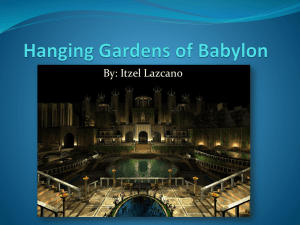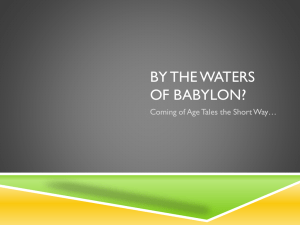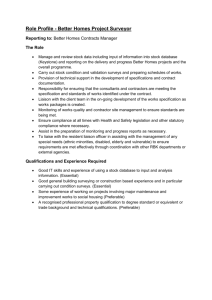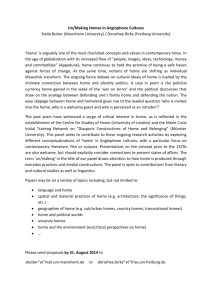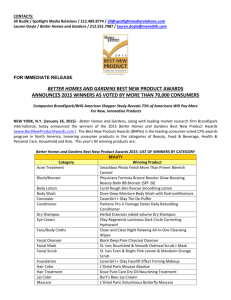Home – Children`s activities - At your service
advertisement
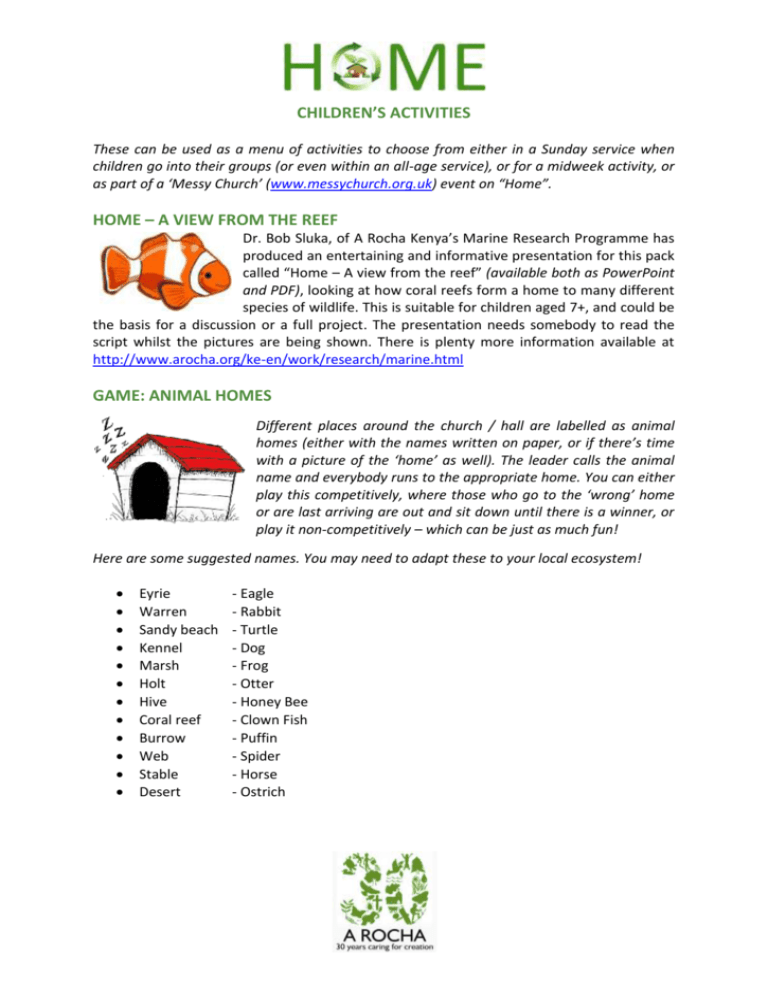
CHILDREN’S ACTIVITIES These can be used as a menu of activities to choose from either in a Sunday service when children go into their groups (or even within an all-age service), or for a midweek activity, or as part of a ‘Messy Church’ (www.messychurch.org.uk) event on “Home”. HOME – A VIEW FROM THE REEF Dr. Bob Sluka, of A Rocha Kenya’s Marine Research Programme has produced an entertaining and informative presentation for this pack called “Home – A view from the reef” (available both as PowerPoint and PDF), looking at how coral reefs form a home to many different species of wildlife. This is suitable for children aged 7+, and could be the basis for a discussion or a full project. The presentation needs somebody to read the script whilst the pictures are being shown. There is plenty more information available at http://www.arocha.org/ke-en/work/research/marine.html GAME: ANIMAL HOMES Different places around the church / hall are labelled as animal homes (either with the names written on paper, or if there’s time with a picture of the ‘home’ as well). The leader calls the animal name and everybody runs to the appropriate home. You can either play this competitively, where those who go to the ‘wrong’ home or are last arriving are out and sit down until there is a winner, or play it non-competitively – which can be just as much fun! Here are some suggested names. You may need to adapt these to your local ecosystem! Eyrie Warren Sandy beach Kennel Marsh Holt Hive Coral reef Burrow Web Stable Desert - Eagle - Rabbit - Turtle - Dog - Frog - Otter - Honey Bee - Clown Fish - Puffin - Spider - Horse - Ostrich MAKING NEST BOXES This is an enjoyable craft activity for children aged 7+. The size of box and entrance hole y depend on what species you are hoping to attract, and obviously this varies depending on what part of the world you are in, so search the web for a nest box plan from your area. There is a good basic plan which could be adapted to local species at http://www.bto.org/nnbw/make.htm. What you need: A plank measuring about 15mm / ¾inch thick, 1.5m / 5ft long weatherproof timber – not plywood or chipboard (be careful not to get pressure-treated timber that has been CCA treated; this includes copper and arsenic which are highly toxic to birds). Galvanised nails Non-rusting metal / plastic hinge (to enable the roof to be opened for cleaning) Water-based preservative (not creosote or similar)Tools: hammer, saw, drill Dimensions: The size of box and entrance hole depend on what species you are hoping to nest – obviously this depends on what part of the world you are in, so search the web for a nest box plan from your area. There is a good basic plan which could be adapted to local species at http://www.bto.org/nnbw/make.htm. Putting it together Cut the plank of wood to shape (see http://www.bto.org/nnbw/make.htm) Drill 4 small holes in the bottom of the box to allow drainage Drill a hole in the front at least 12.5cm / 5in from the bottom of the nestbox, to avoid young birds falling out. The hole size will depend on which species you hope to attract. For the UK and Europe only, the following guide is helpful: o 25 mm for blue, coal and marsh tits o 28 mm for great tits, tree sparrows and pied flycatchers o 32 mm for house sparrows and nuthatches o 45 mm for starlings Fix the bottom, sides, and front together with galvanised nails Attach the roof using the hinge(s) Treat the outside of the box with a water-based preservative, avoiding the area immediately around the entrance hole Dry and air the box Fix the box to a tree or fence at least 2m / 3ft above the ground (to avoid predators), and so that it is accessible for cleaning outside the breeding season. BIBLE DISCUSSION Begin by getting the children to draw their home, or build a home together out of Lego or other building blocks. Most will probably draw the conventional view of a house with a pitched roof, four windows and a front door. Discuss how homes differ around the world, and why (climate, materials, wealth) Ask the children what makes a good home, wherever we live? (safety, protection from weather, people we love, somewhere to relax) Introduce the idea that “home” is not just a building and the people who live in it, but a local area – the church, the school, the community, the parks / gardens / fields and the creatures that live there. Show the narrated PowerPoint “Home – a view from the reef” (available both as PowerPoint and PDF. Discuss how all sorts of creatures need a home, and how overfishing and pollution are damaging the home of many sea-creatures. Read Jeremiah 29:4-11. This is the passage that the adult sermon in this pack is also based on. The version printed below is from ‘The Message’ 4 This is the message from Israel’s God, to all the exiles I’ve taken from Jerusalem to Babylon: 5 “Build houses and make yourselves at home. Put in gardens and eat what grows in that country. 6 Marry and have children. Encourage your children to marry and have children so that you’ll thrive in that country and not waste away. 7 Make yourselves at home there and work for the country’s welfare. Pray for Babylon’s well-being. If things go well for Babylon, things will go well for you.” Briefly explain the background: God’s people, the Israelites, had been beaten in war and taken away as exiles to the city of Babylon by their enemies. How did they feel about that? (They were sad and hated Babylon.) They thought God had left them, or that he would rescue them and take them back home to Jerusalem very soon. How did they feel when God told them to make new homes in Babylon? (sad, angry, confused) What were the things God told them to do in their new home? As they think of each, write them up on a board / screen: o Build houses o Plant gardens o Have healthy families o Work to make their new home a better place o Pray for their new home Discuss how we can be involved in each of these areas in our local ‘home’ area. GET CREATIVE! Spread a large sheet of paper (a roll of plain wallpaper / lining paper is perfect) across some tables, and explain that together we are going to make our local area into the kind of home we, and God, would like to see! Spend a few minutes thinking together about what there would be – and link this to the Jeremiah 29 passage. It should include: Good homes for people (how could they be made so people can mix together better, and children can play safely; for instance where would older people who need caring for live – separately or amongst other homes?) Good homes for wildlife (parks, gardens, woods, streams, nest-boxes, trees) School, hospital, police station, fire station Safe travel (routes for walking, cycling as well as roads for buses, cars etc) Work places Shops Safe places to play Now let the children loose using their imaginations in drawing and painting their home area! They will need some guidance and supervision, but let it be their ideas, not the leaders’! When their blueprint for their home area is finished, it would be great if it can be presented to the whole Church gathering. PRAY Talk about how some people are unhappy because they have been made homeless, or don’t know anybody locally, or perhaps because their house is not a happy home. Talk too about how selfish human behaviour can cause animals to lose their homes (such as coral reefs, but maybe also gardens locally that have been lost etc). Either lead the children in prayer or, even better, get them to write (or say) their own short prayers on the theme of home.
